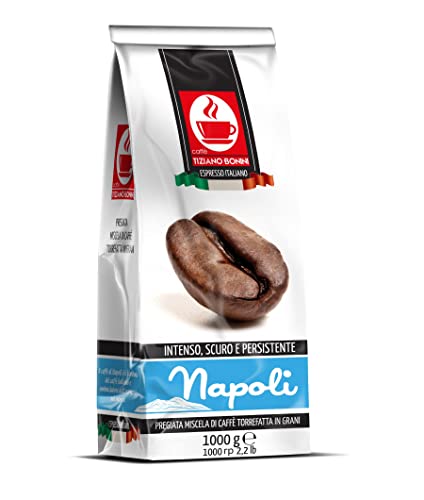Which Coffee Beans Are the Best?
The type of beans that you select will make the difference when it is time to make a fantastic cup. Each kind has its own distinct flavor that pairs well with a variety of drinks and food recipes.
Panama leads the pack due to their rare Geisha beans, which score high in cupping tests and are expensive at auction. Ethiopia and particularly Yirgacheffe bean, is not far behind.
1. Geisha Beans from Panama
If you're looking to find the top coffee beans around the globe Look at Geisha beans from Panama. Geisha beans are prized for their distinctive aroma and flavor. These rare beans, grown at high altitudes, undergo an unique process that gives them their distinctive flavor. The result is a cup with a smooth, rich flavor.
Geisha coffee is indigenous to Ethiopia however it was introduced to Panama for the first time in 1963. Geisha coffee has been known to win competitions with its distinctive taste and flavor. Geisha beans are also costly due to the work required to grow them. The Geisha coffee plant is more difficult to cultivate than other coffee plants, because it requires higher elevations and unique climate conditions.
Geisha beans are delicate and should be handled with extreme care. They should be sorted with care and carefully prepared for roasting. Otherwise, they can become bitter and acidic.
The beans are cultivated at the Janson Coffee Farm, which is located in Volcan, Panama. The farm is focused on quality production and is committed to preserving the quality of life in the. They use solar panels for energy, recycle waste materials and water, and use enzyme microbes to improve the soil. They also reforest the area and use recycled water to wash. Their coffee is Washed Geisha, which was awarded the highest score at the Panama Coffee Competition.
2. Ethiopian Coffee
Ethiopia is a huge coffee producer with a long track record of producing some of the world's finest drinks. They are the 5th largest coffee producers in the world. their beans are highly sought-after for their distinctive floral and fruity flavor profiles. Ethiopians unlike other beans, are best roasted to medium roast. This allows the delicate floral notes to remain while also highlighting their citrus and fruity flavors.
While Sidamo beans are renowned for their fresh acidity, citric acidity, other coffees from other regions like Yirgacheffe and Harar are also considered to be some of the top in the world. Harar is the most famous and oldest coffee variety. It has a distinct mocha and wine flavour. Coffees from the Guji zone are also known for their distinctive terroirs and complex flavors.
Natural Process is a different kind of Ethiopian coffee that is produced by dry-processing instead of wet processing. Wet-processing involves washing coffee beans that tends to remove some of its fruity and sweet flavors. Natural Ethiopian coffees that were processed were not as popular than their washed counterparts. They were more commonly used to brighten blends, and were not sold on the specialty market. However, recent technological advancements have allowed for higher-quality natural Ethiopians.

3. Brazilian Coffee
Brazilian Coffee is a rich mix of different kinds of beans. It is described as having an acidity that is low. It is sweet with some chocolate. light roast coffee beans can vary depending on the region and state where it is grown. It is also known for its nutty and citrus notes. It is a good option for those who prefer medium-bodied coffee.
Brazil is the world's largest coffee producer and exporter. Brazil is the largest producer of more than 30 percent of the world's total coffee beans. It is a major agriculture industry and Brazil's economic growth relies heavily on it. Brazil has a climate that is ideal for coffee production, and fourteen major coffee-producing areas.
The main beans used in Brazilian coffee are Catuai, Mundo Novo, Obata and Icatu. All of them are varieties of Arabica. There are also a lot of hybrids that contain Robusta. Robusta is a coffee bean that originated in Sub-Saharan Africa. It's not as delicious as Arabica coffee, but it is much easier to grow and harvest.
It is important to realize that slavery is still prevalent in the coffee industry. Slaves in Brazil are often shackled to long and exhausting working hours and are often not provided with adequate housing. The government has taken steps to tackle this issue, including programs to aid coffee farmers pay their debts.
4. Indonesian Coffee
The top Indonesian coffee beans are known for their earthy, dark taste. The volcanic ash mixed into the soil gives them a robust body and a low acidity which make them great for blending with high-acid coffees from Central America and East Africa. They also respond well to roasting that is darker. Indonesian coffees are characterized by a complex and rustic flavor profile and often have tasting notes of tobacco, leather wood, ripe fruit and spices.
Java and Sumatra are the two major coffee producing areas in Indonesia however, some coffee is also produced on Sulawesi and Bali. A lot of farms in these regions utilize a wet-hulling process. This differs from the washed method utilized in the majority of the world. Coffee cherries are pulverized and then washed and dried. The hulling process decreases the amount of water that is present in the coffee, which could reduce the effect of rain on the final product.
One of the most popular and premium varieties of Indonesian coffee is Mandheling which comes from the Toraja region. It is a full-bodied coffee with hints of candied fruits and intense chocolate flavors. Other types of coffee that come from the region include Gayo and Lintong. These are typically wet-hulled, and have a strong and smoky aroma.
